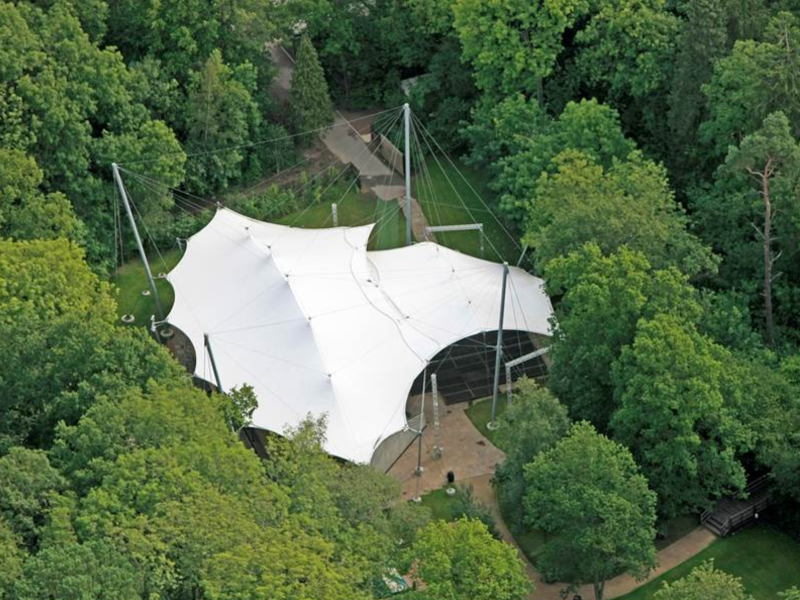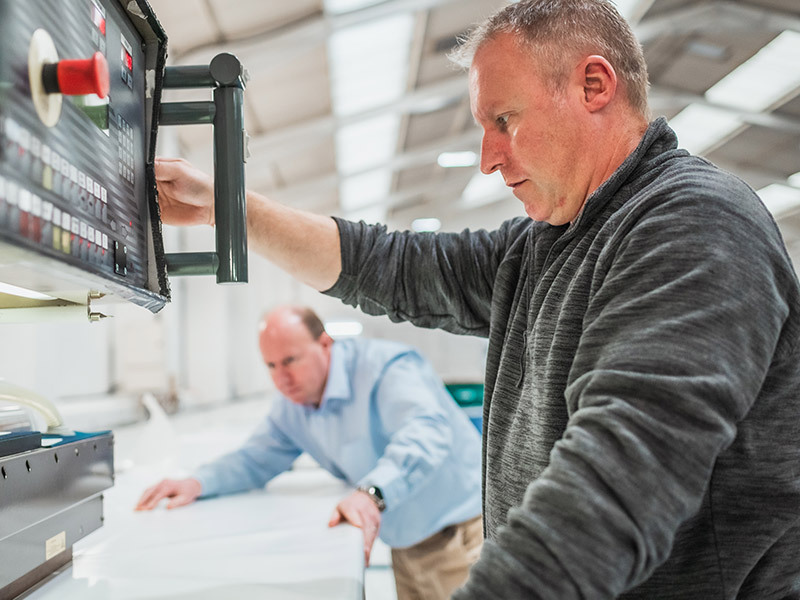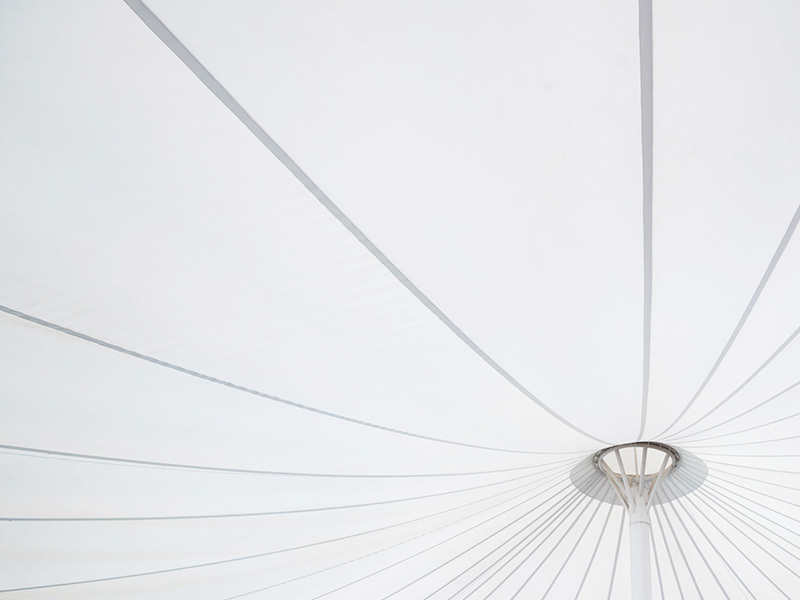
Concept to Reality: How Tensile Fabric Has Revolutionised Architecture
In the ever-evolving world of architecture, the quest for innovative materials and designs has led to the introduction of revolutionary concepts that redefine the way we perceive and interact with the built environment. J & J Carter has emerged as a leading force in the architectural industry, playing a pivotal role in advancing the integration of tensile fabric structures into cutting-edge architectural designs.

Understanding Tensile Fabric
This revolutionary material, crafted from resilient components like PVC-coated polyester or PTFE-coated fibreglass, harnesses the power of tension to forge stable structures, challenging the established norms of traditional design and ushering architects into a realm of limitless spatial possibilities.
In applications ranging from the construction of canopies and roofs to the adornment of façades, this avant-garde material injects a harmonious blend of fluidity and adaptability into architectural design. It not only serves as a testament to the prowess of modern engineering but also elevates structures to seamlessly integrate with their surroundings, striking a balance between functionality and aesthetic allure.
As architects persist in their quest to redefine the limits of what can be achieved, these materials emerge as a symbol of the ever-evolving nature of architectural innovation. Its utilisation marks a departure from the conventional, inviting a new era where tension-driven stability opens the door to a diverse spectrum of design possibilities, transforming the very fabric of the built environment.
Conceptualisation: Breaking Boundaries
The evolution from architectural concepts to tangible reality is driven by visionary architects and engineers who dare to challenge traditional design norms. Tensile fabric structures stand at the forefront of this revolution, offering architects a medium that not only enhances functionality but also sparks aesthetic innovation.
The lightweight nature of tensile fabric becomes a catalyst for creativity, allowing architects to craft daring and dynamic structures that redefine city skylines and reshape the architectural panorama.
This revolutionary material liberates architects from the constraints of conventional building elements, providing a blank canvas for the exploration of organic and fluid designs. The synergy between visionary minds and tensile fabric results in structures that transcend the ordinary, contributing to a vibrant urban environment where innovation harmonises with functionality.
Design Flexibility and Innovation
The inherent flexibility of tensile fabric emerges as a cornerstone for architectural experimentation, pushing the boundaries of form and function in unprecedented ways. Architects, armed with the versatility of this material, are now able to embark on a journey of design exploration that was once deemed unimaginable. Tensile fabric's remarkable adaptability allows it to be expertly manipulated into a myriad of shapes, unveiling a realm of organic and fluid designs that ignite the imagination.
These design possibilities extend across a diverse spectrum of architectural expressions, from the creation of undulating canopies that gracefully dance with the wind to the realisation of futuristic pavilions that embody cutting-edge aesthetics and functionality. The tensile fabric serves as a dynamic canvas for architectural innovation, granting architects the freedom to traverse new dimensions and defy traditional norms. As the material seamlessly responds to the visionary ideas of architects, it not only redefines the structural landscape but also becomes a symbol of limitless creativity in the architectural realm. The malleability of tensile fabric, in essence, transforms it into a medium where architects can sculpt the future of design, continuously pushing the envelope of what is achievable in the ever-evolving world of architecture.
Environmental Sustainability
In today's architectural landscape, sustainability takes centre stage, influencing how buildings are designed and built. Tensile fabric stands out as a champion in this era of environmental consciousness. Its lightweight nature reduces the need for bulky support structures, cutting down on materials and energy consumption during construction. Furthermore, certain types of tensile fabrics are translucent, allowing natural light to filter through, reducing the dependence on artificial lighting and enhancing energy efficiency.
In essence, tensile fabric structures not only transform the aesthetic appeal of structures but also have a crucial role in minimising their ecological impact. It embodies a range of advantages that align with the imperative of sustainable design within contemporary architecture.
Versatility in Applications
The versatility of the fabric goes well beyond its role in grand architectural landmarks. Its practical application extends to various settings, ranging from stadiums and airports to commercial spaces. Tensile fabric structures prove invaluable in these diverse environments, serving multiple purposes.
In stadiums, for instance, tensile fabric can be utilised to create expansive and visually striking canopies that offer shelter to spectators while enhancing the overall aesthetic appeal. Airports can benefit from the lightweight and flexible nature of the tensile fabric, allowing for the construction of efficient and visually impressive terminal buildings or covered walkways. In commercial spaces, this material can be employed to craft innovative and dynamic structures that not only provide shelter but also contribute to the creation of unique public spaces.
Moreover, tensile fabric structures have the potential to become iconic landmarks that define the identity of a city. The adaptability of the material provides architects with the freedom to tailor their designs to the specific needs and vision of each project. This flexibility makes the tensile fabric a valuable asset in various architectural applications, enabling the realisation of creative and sustainable solutions across different urban and public spaces. As the demand for environmentally conscious and visually appealing designs continues to grow, the role of tensile fabric structures in shaping the contemporary architectural landscape becomes increasingly significant.
Engineering Marvels
Turning conceptual dreams into tangible structures requires meticulous planning, engineering expertise, and precision. The realisation of tensile fabric structures involves a collaborative effort between architects, engineers, and fabricators. Advanced computational tools and simulations are employed to analyse and optimise the tension forces, ensuring structural stability and safety. The result is a harmonious blend of art and science, where architects' ethereal visions come to life as engineering marvels.
From the initial spark of inspiration to the realisation of awe-inspiring structures, the journey of tensile fabric in architecture is a testament to human creativity and innovation. These lightweight and flexible materials have not only revolutionised the way architects approach design but also paved the way for a more sustainable and visually captivating built environment.
As technology continues to advance and architects explore new frontiers, the tensile fabric is likely to remain a key player in shaping the future of architecture, pushing the boundaries of what is possible in the realm of design and construction.
Start Working with Tensile Fabric
If you are looking to integrate tensile fabric architecture or tension fabric structures into your projects, J & J Carter stands ready to offer our expertise. We specialise in designing and manufacturing bespoke solutions tailored precisely to individual requirements, coupled with an efficient and professional installation service. Contact us today to discuss and plan your fabric architecture project with precision and excellence.


